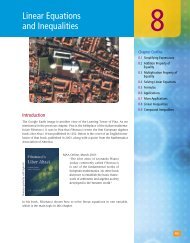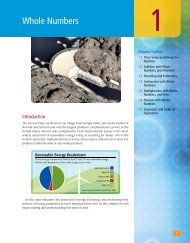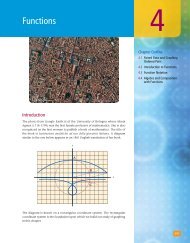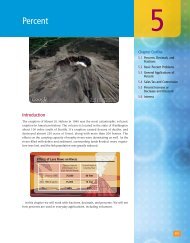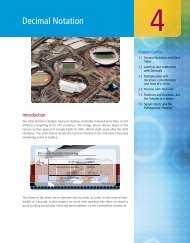Chapter 9 - XYZ Custom Plus
Chapter 9 - XYZ Custom Plus
Chapter 9 - XYZ Custom Plus
Create successful ePaper yourself
Turn your PDF publications into a flip-book with our unique Google optimized e-Paper software.
RESEARCH PROJECT<br />
Algebraic Symbolism<br />
Algebra made a beginning as early as 1850 b.c.<br />
in Egypt. However, the symbols we use in algebra<br />
today took some time to develop. For example,<br />
the algebraic use of letters for numbers<br />
began much later with Diophantus, a mathematician<br />
famous for studying Diophantine equations.<br />
In the early centuries, the full words plus,<br />
minus, multiplied by, divided by, and equals were<br />
written out. Imagine how much more difficult<br />
your homework would be if you had to write<br />
out all these words instead of using symbols.<br />
Algebraists began to come up with a system of<br />
symbols to make writing algebra easier. At first,<br />
not everyone agreed on the symbols to be used.<br />
For example, the present division sign 4 was<br />
often used for subtraction. People in different<br />
countries used different symbols: the Italians<br />
preferred to use p and m for plus and minus,<br />
while the less traditional Germans were starting<br />
to use 1 and 2.<br />
Research the history of algebraic symbolism.<br />
Find out when the algebraic symbols we use today<br />
(such as letters to represent variables, 1, 2,<br />
a<br />
4, ?, a/b and } }) came into common use. Summarize<br />
your results in an<br />
b<br />
essay.<br />
576<br />
<strong>Chapter</strong> 9 Solving Equations and Inequalities



